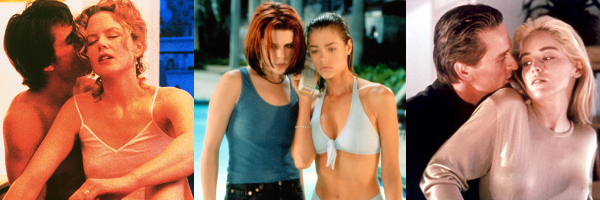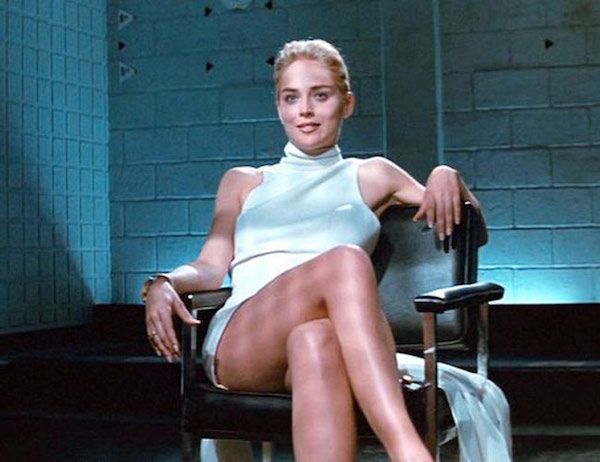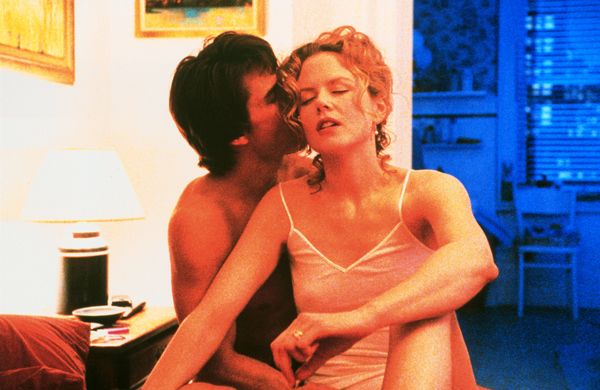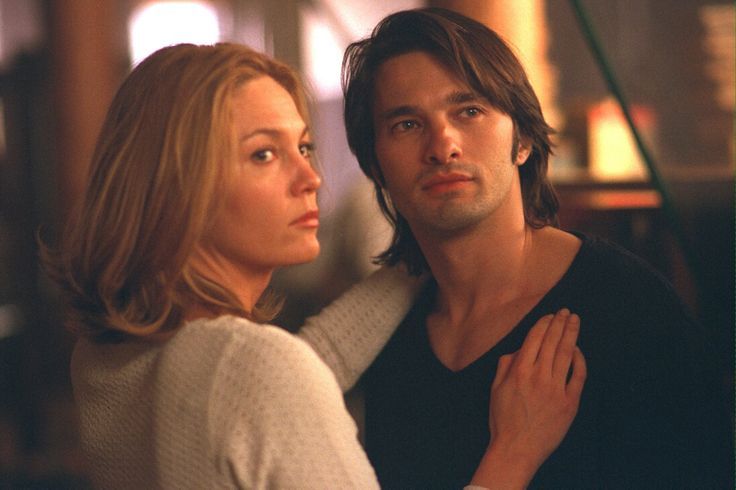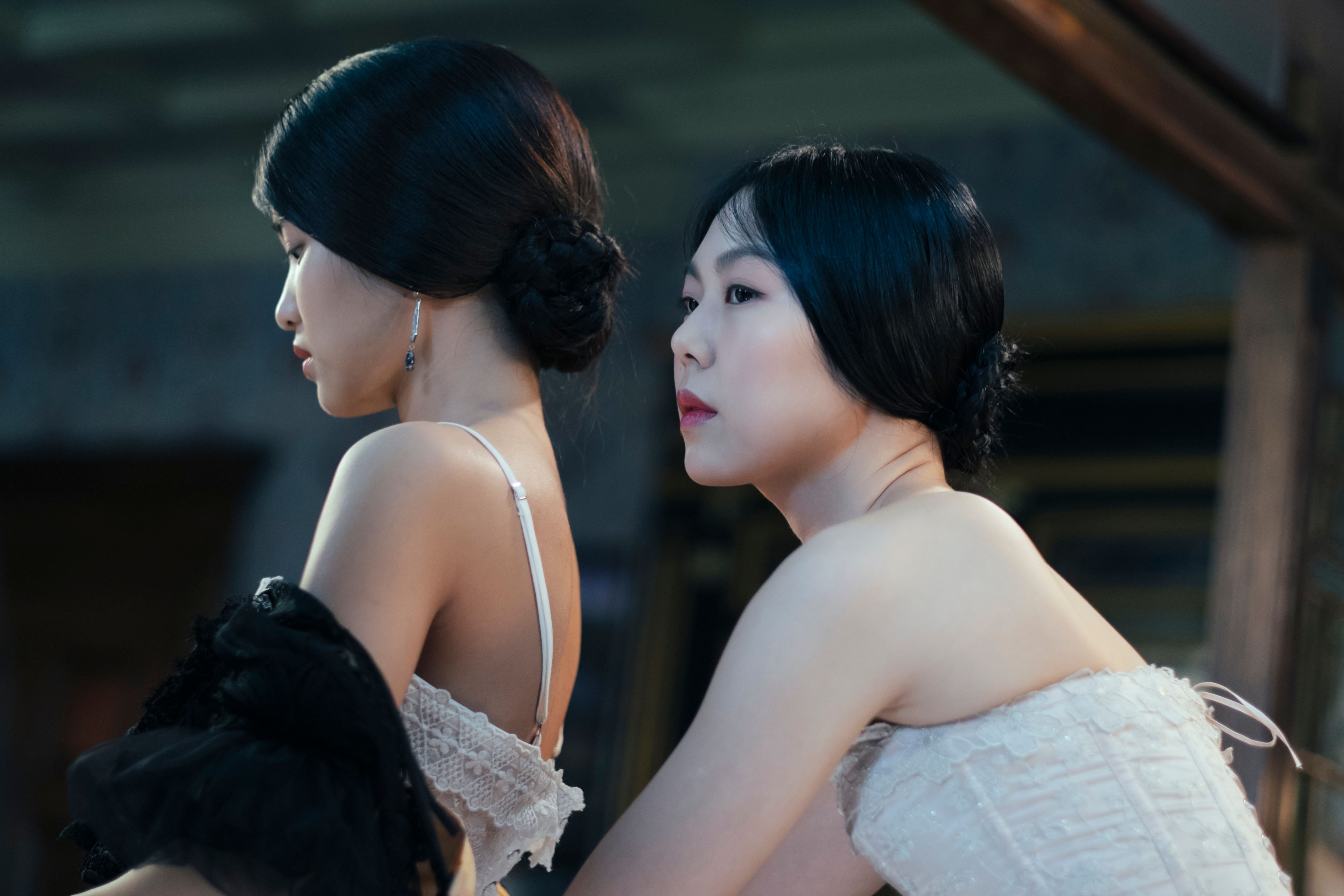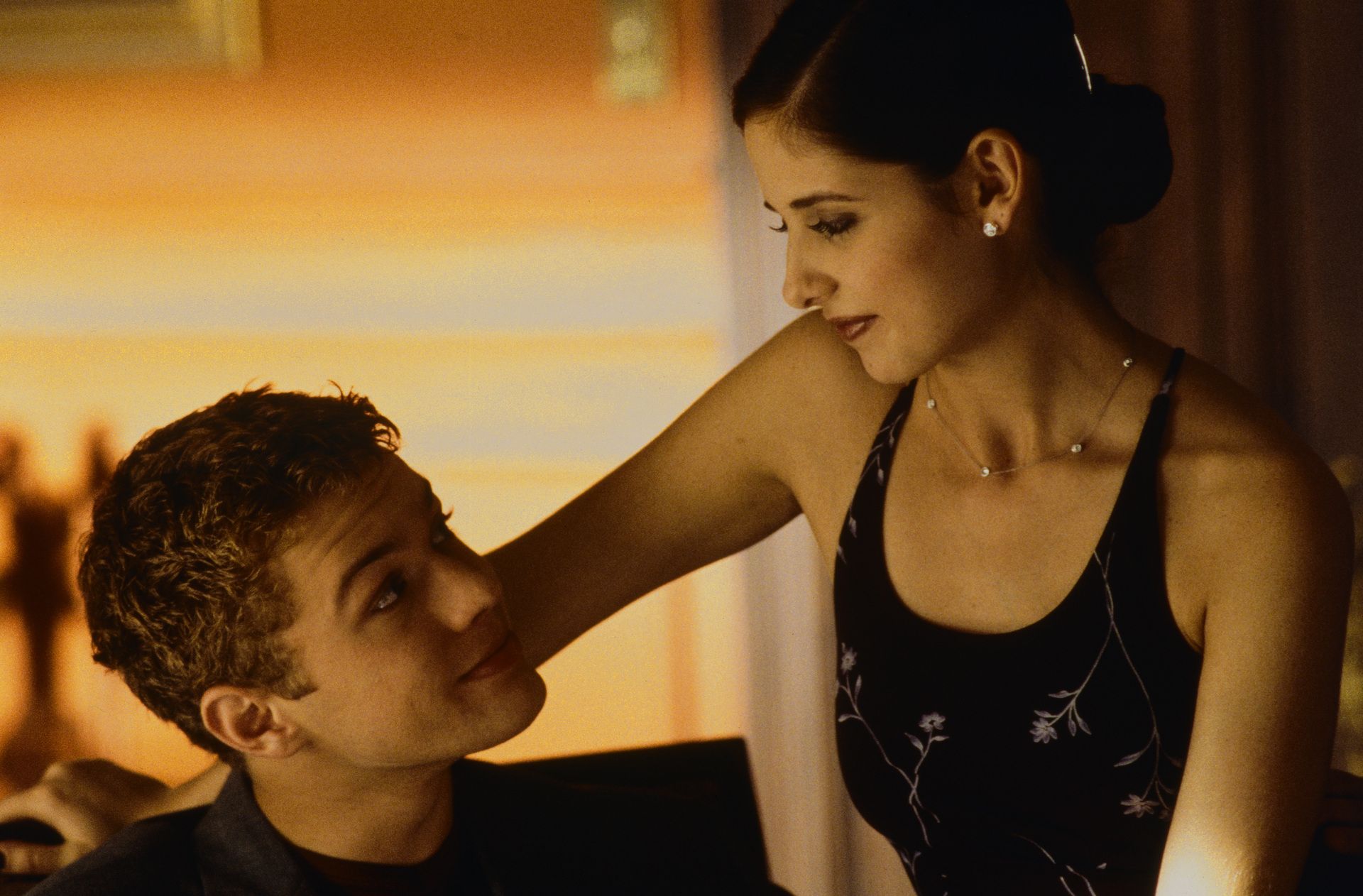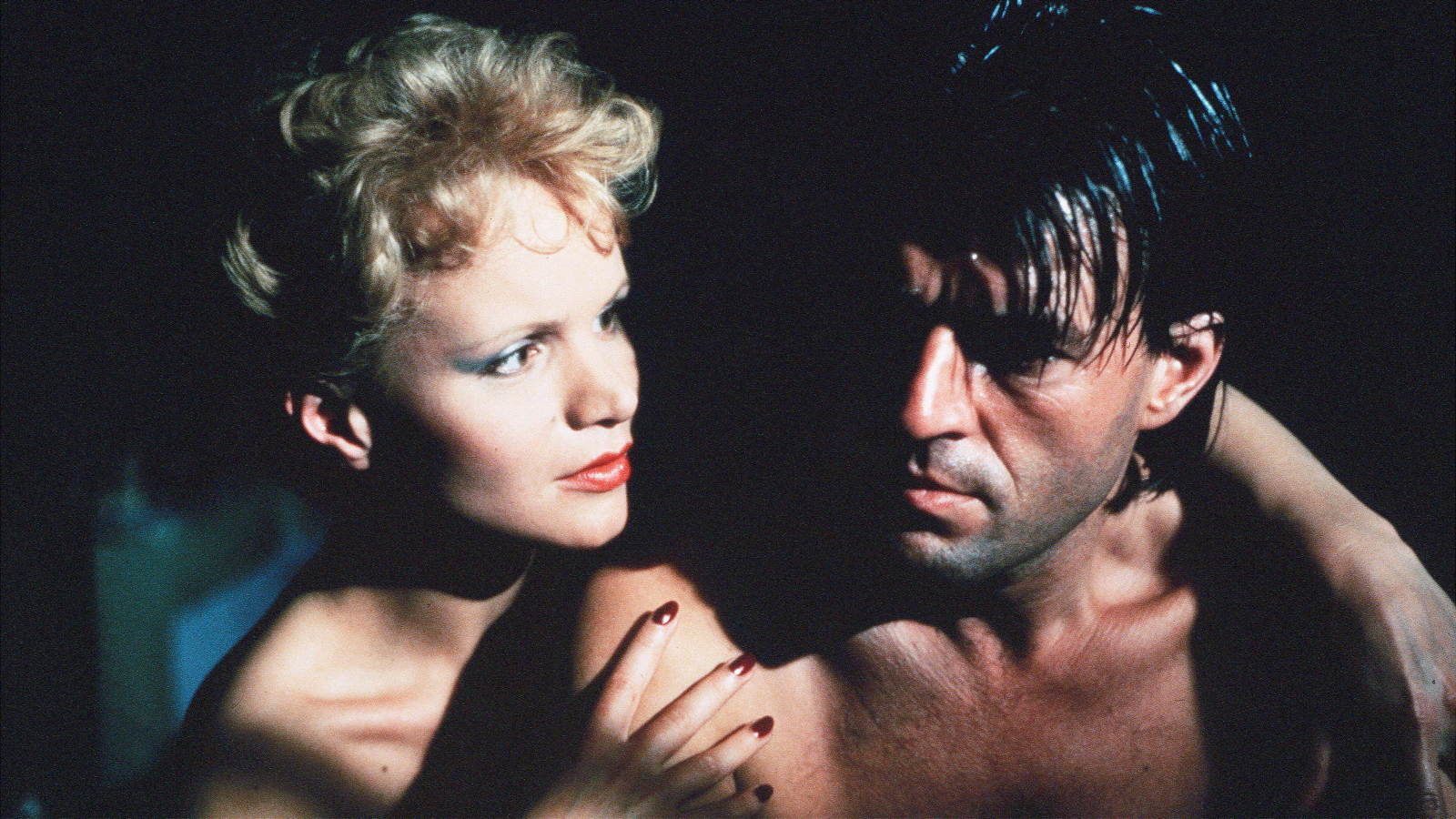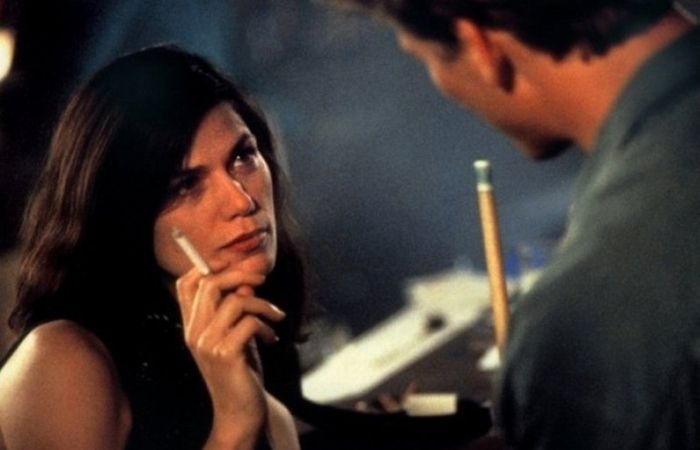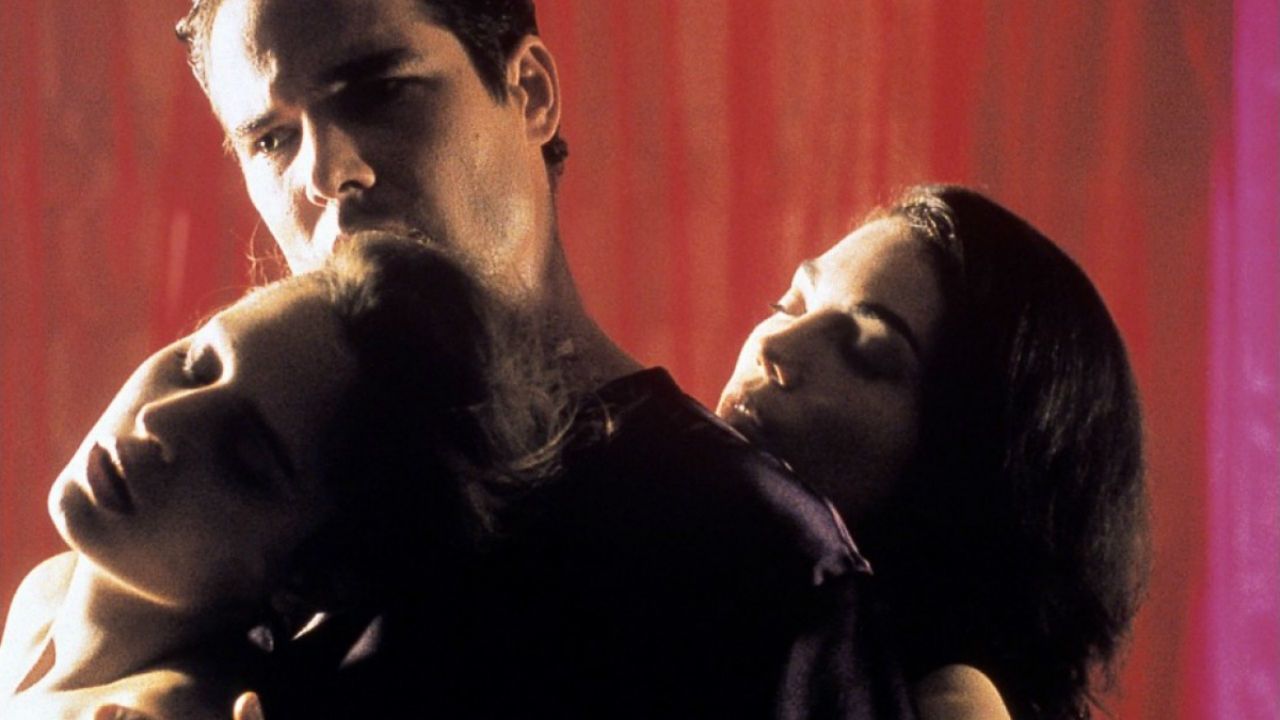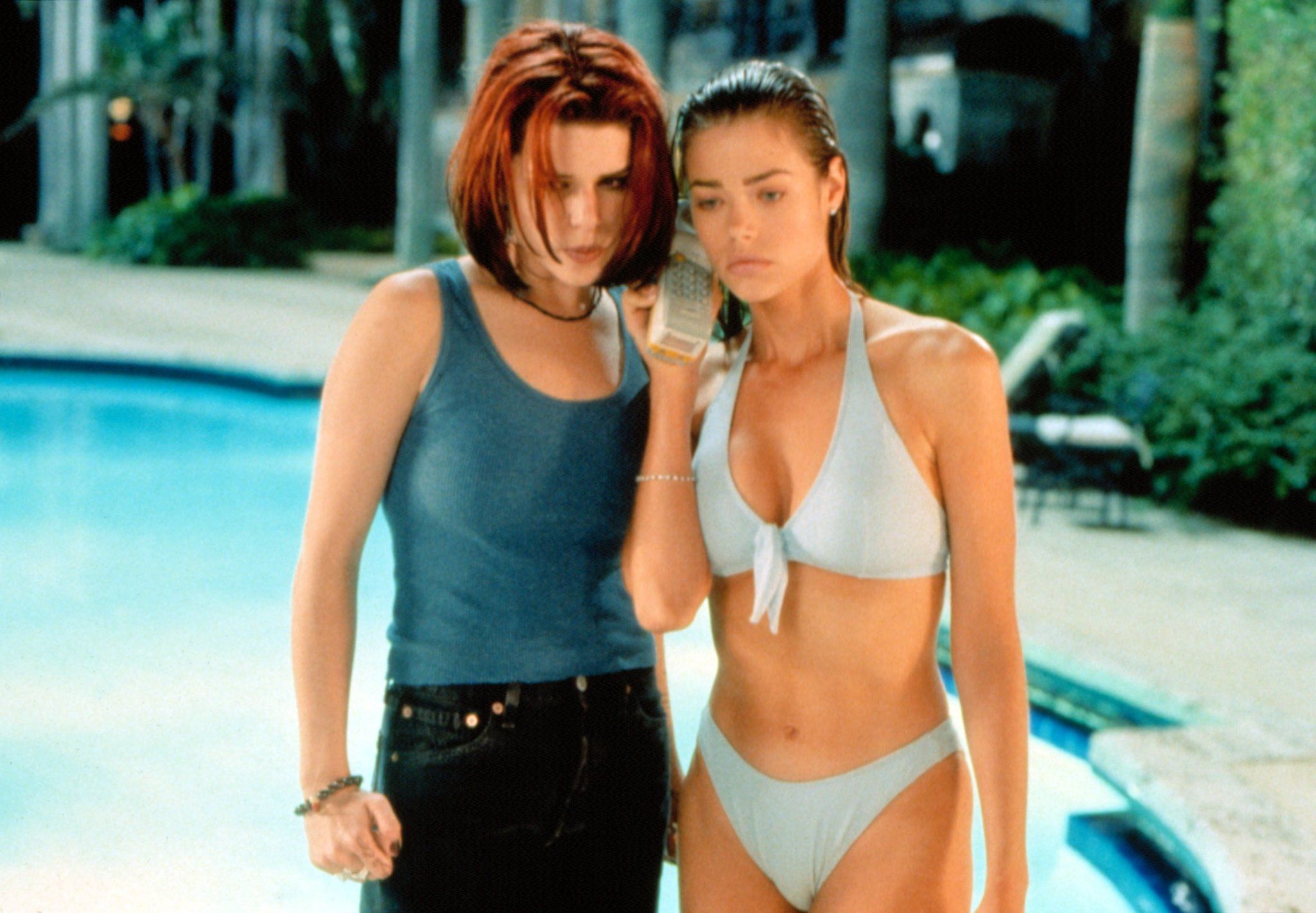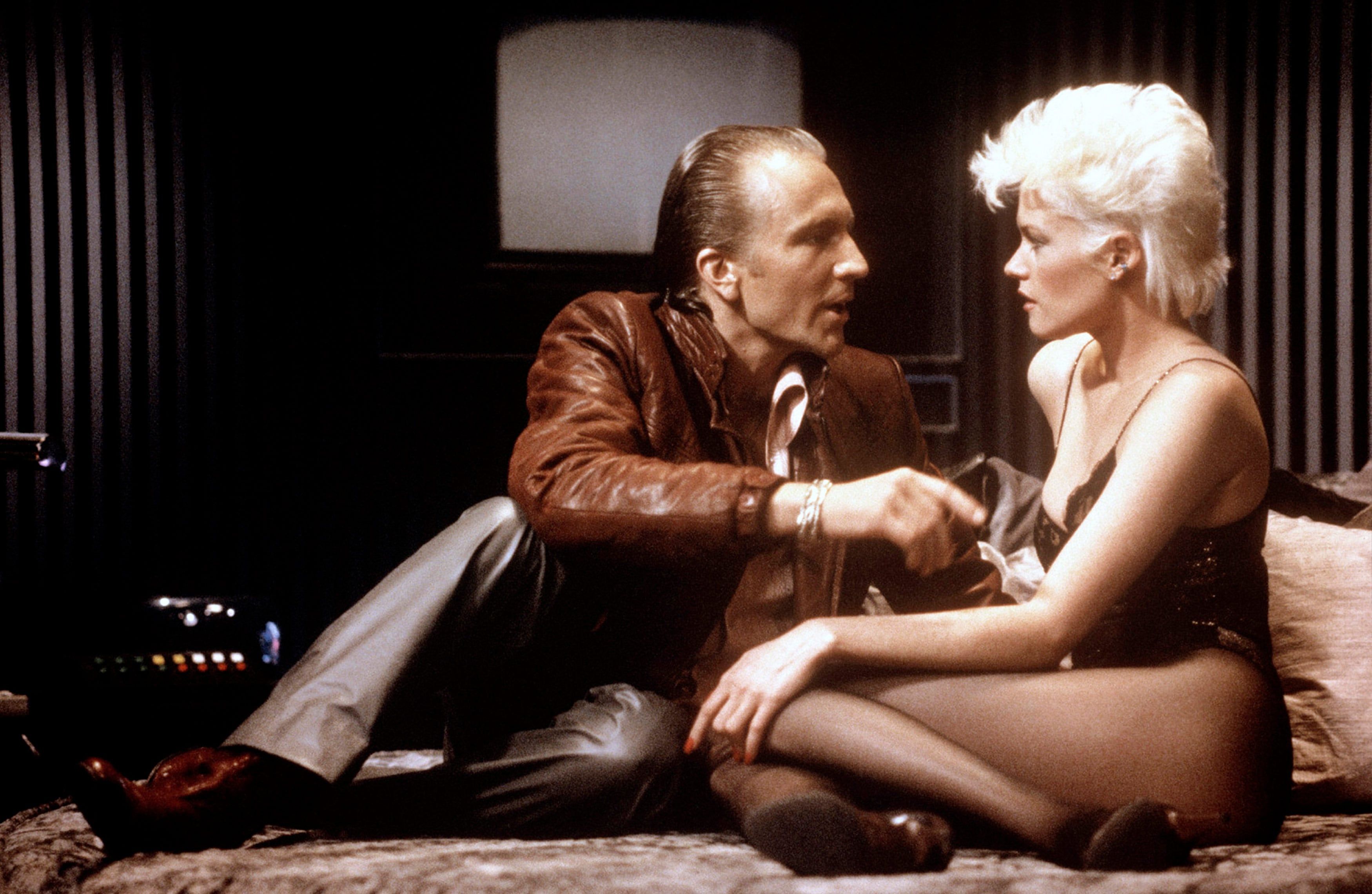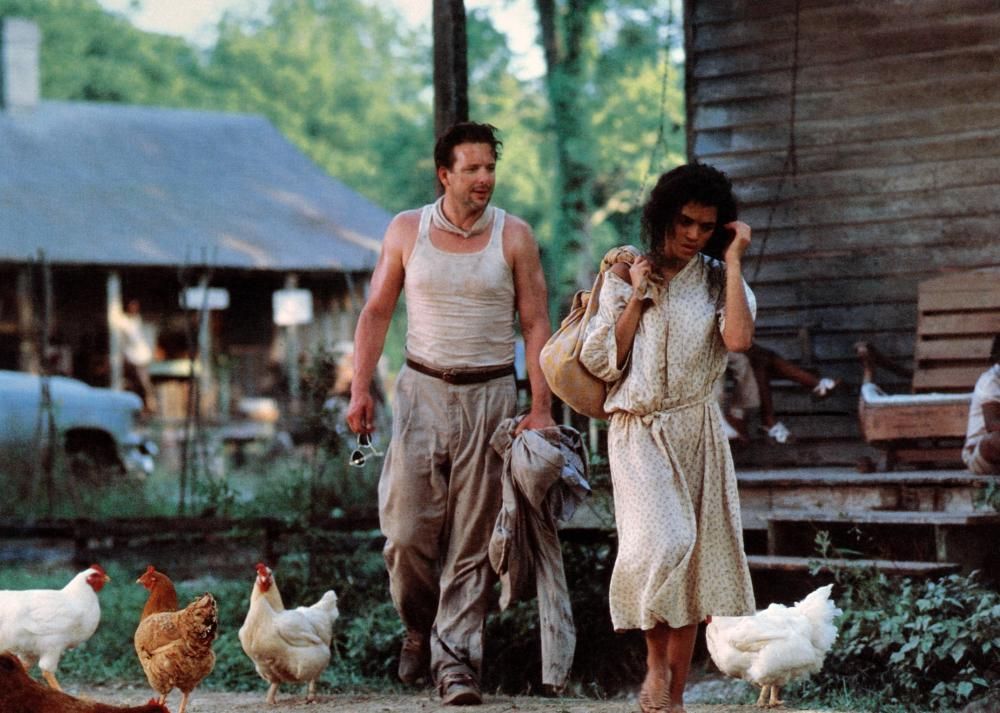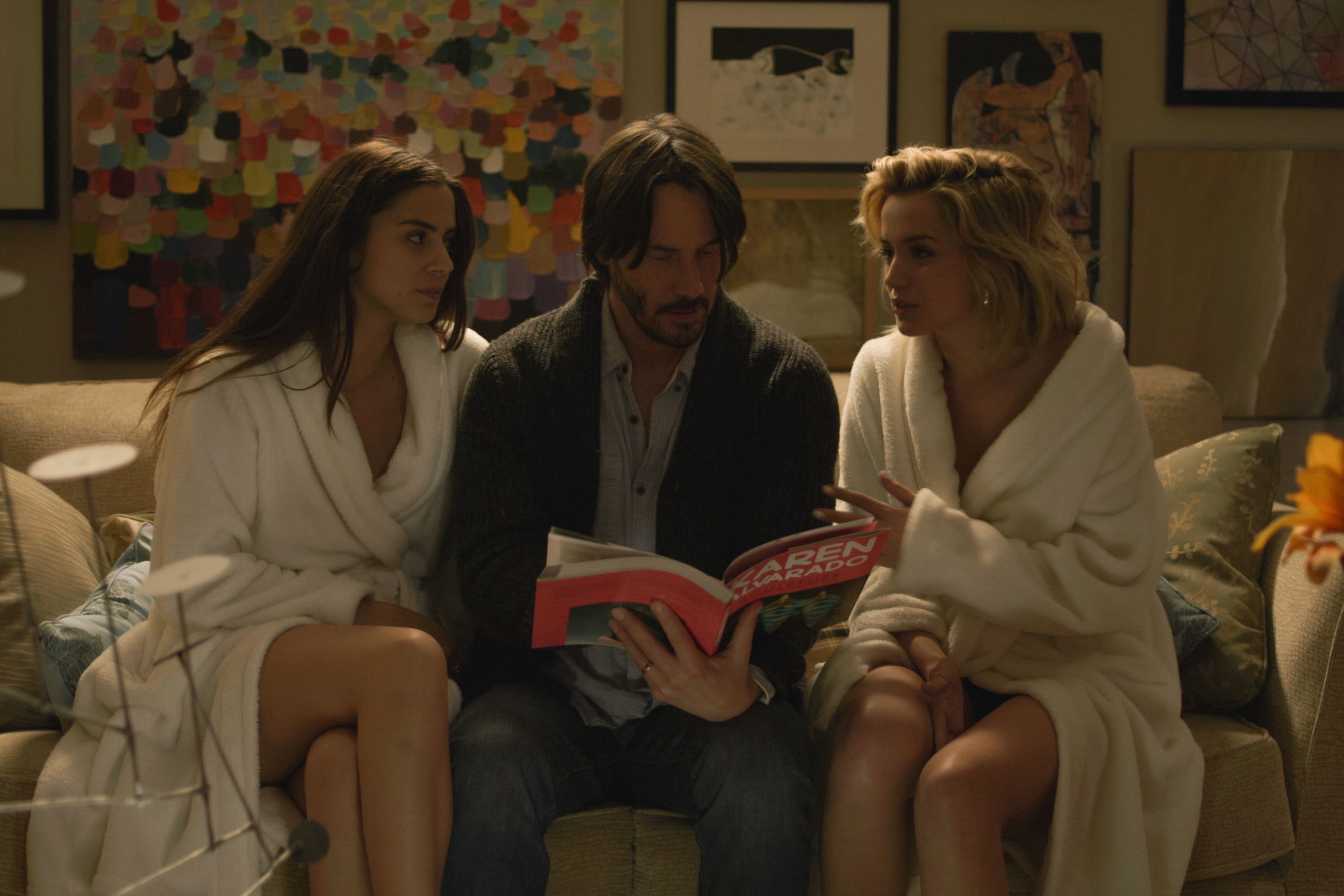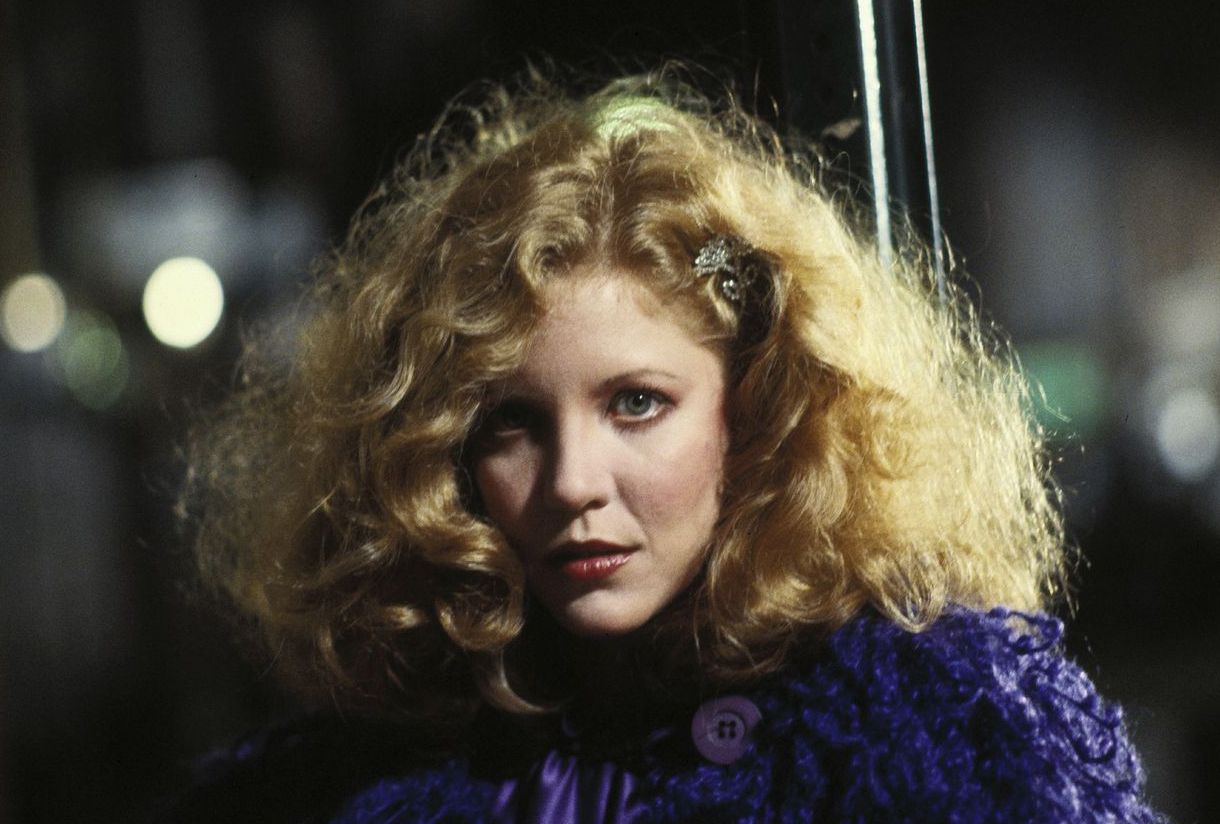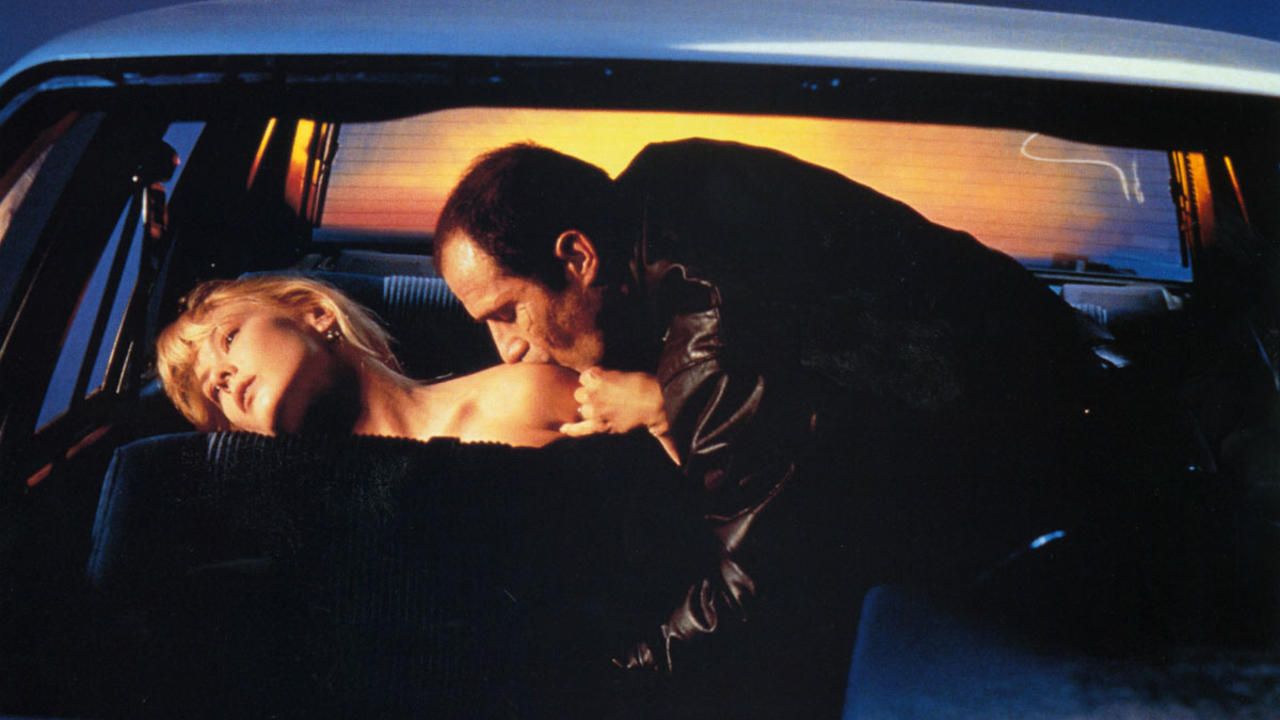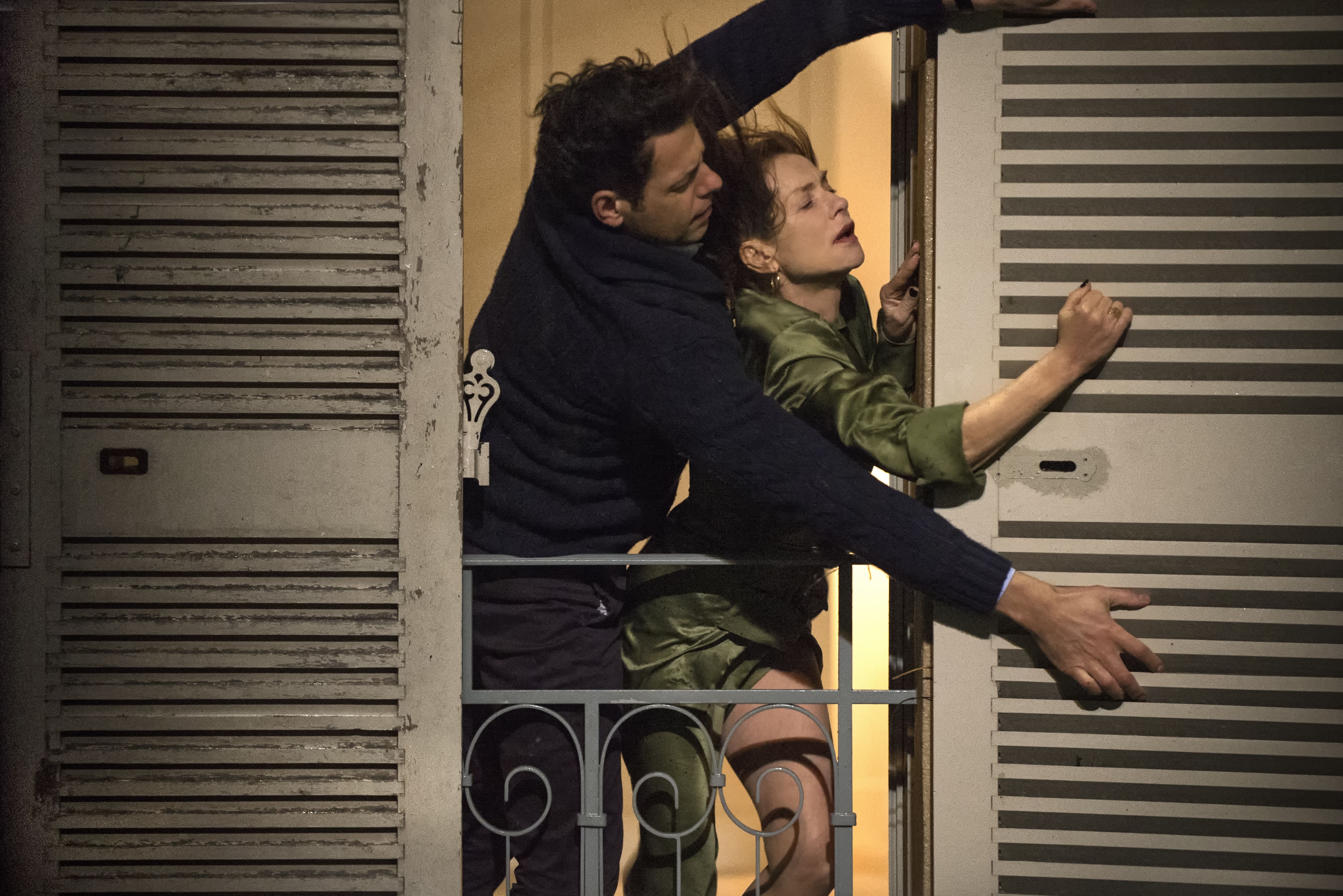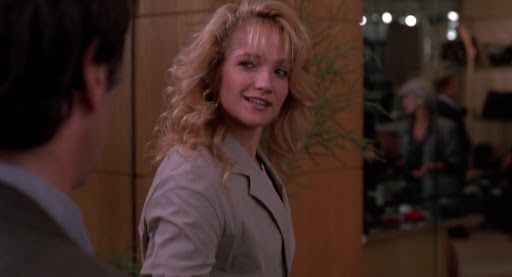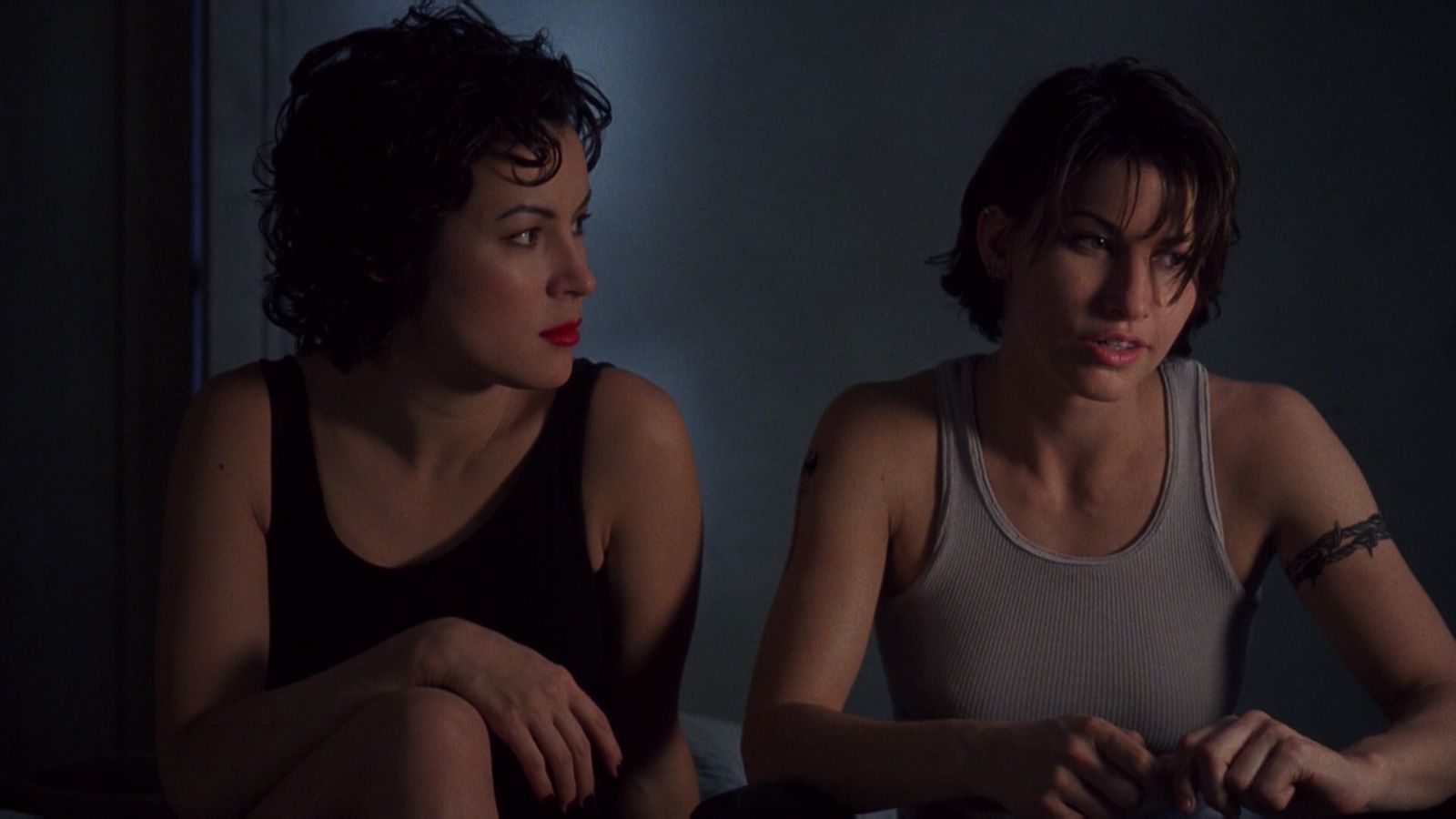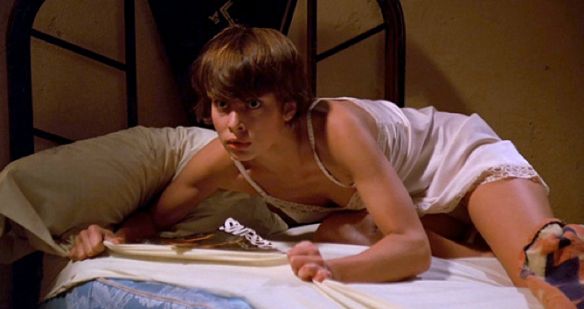The back alley bastard child of noir, pulp, and Hitchcockian paranoia; the erotic thriller is one of the most indulgent and trashy genres in cinema, but it's not without its merits. It hinges on the marriage of sex and death; mixing up seduction, deception, and violence into a decadently delicious cocktail that allows us to explore our basest animal instincts from a safe distance. And they're not all about the sex (though they are a lot about the sex); the best erotic thrillers entangle their lurid affairs into compelling mysteries and dramatic tales of Which might sound a bit like the old "I read it for the articles" refrain, but Playboy always has had excellent articles, and erotic thrillers are built on gripping stories.
They're also a dying breed. The once-popular genre has all but become a relic of the '90s, especially in America; an absent voice in the modern cinematic landscape that is dearly missed. No doubt the rise of the internet and subsequent easy access to pornography have stifled the genre, which once offered a semi-respectable means of titillation without the cultural shame of a stop to the porn shop.
However, that escapist need for titillation has manifested once again in the form of Fifty Shades of Grey, E.L. James' wildly popular series of erotic novels and their subsequent film adaptations. The success of the Fifty Shades franchise (in addition to being an intoxicating economic fantasy in an age of recession) is largely due to that same safety net. Swaths of women who might otherwise still be uncomfortable with the blunt force vulgarity of pornography have found a means of exploring their darker sexual inclinations in a way that's polite-society approved.
And while I'm all for a resurgence of the erotic thriller, there's a problem. On top of just not being very well told, The Fifty Shades stories are fundamentally broken on a moral level; encouraging the toxic idea of mental abuse and emotional manipulation as a form of romance and spurring on that age-old fallacy that the right woman can "fix" a broken man.
Not that the erotic thriller has even been the benchmark of moral integrity. In truth, it's often been a rather harsh genre to women – especially single career women – awash with femme fatales driven mad by lust and the poor men who fall in their wake. However, if the characters and their behavior have never been exactly politically correct, they have always been unapologetic actual characters with desires and needs all their own, who are allowed to get as down and dirty as the men with their own agency. They're not exactly feminist, but they reject traditional often reject traditional cinematic gender roles with brazen abandon.
With that in mind, Brian Formo and I have put together a list of alternate suggestions to get your erotic fix with a healthy dose of engaging storytelling and cinematic flourish. Check out our picks below.
Body Heat (1981)
Written and directed by Lawrence Kasdan -- yes, the very same of Raiders of the Lost Arc and Star Wars fame--Body Heat is a seminal erotic thriller and one of the best neo-noirs ever put to screen. Body Heat begins with an illicit love affair; the kind that burns you whole and leaves melted in the hands of your lover; and that's the way of everything in the film. It's all smoldering hot hot heat painted in a pallet of reds and oranges in the thick of a summer heat wave so sticky your glasses might fog up just from watching.
As the lovers in question, William Hurt and Kathleen Turner bring all that sweaty passion to bear... and to bare, as the duo spends much of the first act naked, twisted up in each other's arms. Hurt stars as Ned Racine, a cocky lawyer who fancies himself something of a ladies man until Turner's Matty Walker saunters into is life, turning him into lust-drunk putty in her hands. In her film acting debut, Turner gives as commanding a performance you could beg for, and you would beg her for it if she wanted you to, enchanting and utterly fearless as a woman trapped in a loveless marriage who finds her passions rekindled by a handsome stranger. It's right about the time Ned comes up with the idea to murder her husband that the truth behind that romance begins to take shape, and where Body Heat's best noir elements come to life.
While Body Heat is sexy as hell, it's far from trash. In truth, all those sultry scenes in the beginning of the film are a cinematic sleight of hand as Kasdan subtly stacks the dominos while you're watching these people fuck and fuck and fuck, and each frenzy of passion threatens to send them toppling. When they do finally start to fall, it's a thing of beauty to watch. Kasdan lovingly builds on the backs of the hard-boiled thrillers of days gone by, playing familiar beats, but never in a way that feels tired or without innovation. -- Haleigh Foutch
Basic Instinct (1992)
Paul Verhoeven’s Dutch films are littered with casual sex and rape. In prude America, he was a hired hand of the violent spectacle and delivered two classics, RoboCop and Total Recall, before he got the chance to engage his “sleazy” side stateside. Of course, the kink in Basic Instinct had to receive an exclamation point of violence because that was America’s accepted comfort zone. Sex puts butts in the seats, but violence (or melodrama) is what makes it a movie, because otherwise we could just stay at home for a skin flick and not be ashamed.
Verhoeven has fun with this. He opens the film with a sex scene that goes from hot to kink in a matter of second; a dominating blonde ties up her mate and as she arches back to achieve her climax, she grabs an ice pick she placed in the satin sheets and stabs the man to death (in ecstasy, of course). A beguiling blonde author who’s written about an ice pick sex maniac killer before, Catherine Trammel (Sharon Stone) is person of interest number one. After a famously revealing line of questioning, the detective’s (Michael Douglas) interest in Catherine puts him in her bed in an attempt to find the truth. Basic Instinct is a fun play on the man attempting to rescue a woman, because essentially he’s trying to prove that his sexual prowess is enough to satiate her without needing that extra stab to complete an orgasm. Of course this infatuation comes from Catherine being sexy and sexually free in a way that also frightens him and that fear of her allows her to always have control.
Though Basic Instinct isn’t particularly feminist, it does allow a woman to freely indulge in sex in a manner where her promiscuity isn’t judged, her extracurriculars are. The Hollywood lesson: a promiscuous woman won’t be harmed for sexual desires if she’s the one doing the harm. And there’ll always be a man willing to see if he can change her murdering ways by being an equal lay. — Brian Formo
Eyes Wide Shut (1999)
The so-called last masterpiece from Stanley Kubrick, Eyes Wide Shut's production is the stuff of legends – a record-breaking continuous 400 day shoot that Tom Cruise and Nicole Kidman reportedly signed onto with the agreement that they would work on the picture for as long as Kubrick wanted them to. The result is exactly the kind of technical mastery you'd expect from the genius filmmaker, but it's not at all what you'd expect for the genre he's working in.
Fittingly, the story is about obsession. The film follows Cruise as a high-society New York City doctor, whose life is thrown for a loop when his wife (Kidman) confesses her sexual fantasies about a young naval officer she glimpsed the summer before. His jealousy is tremendous and his imagination is ignited, leading him in short order to a secret sex club where model-esque naked women are on proud display in the midst of an all-out orgy. Once he's discovered as an interloper, there is a constant threat of unknown consequences that drive the rest of the film's actions as he desperately seeks to uncover the truths that evade him; both about the secret society and his own marriage.
Eyes Wide Shut is the odd erotic thriller in that it's filled to the brim with sex -- on-screen, imagined, and coursing through the subtext of every scene -- but it's not lusty in the slightest. Kubrick's compulsive, controlling nature as a filmmaker sets a nightmarish and otherworldly tone, down to its very setting. The director insisted on filming in London, even the NYC exteriors, meaning a mini New York was constructed on the sound stages, giving those moments a touch of surrealism and counterfeit that further stokes the bleeding lines between reality and fantasy. Instead of the visceral heat we've come to expect from the genre, Eyes Wide Shut is all neurotic paranoia. It's not hot, it's haunting. Sex – especially indulgent and extra-marital sex-- is treated as a deadly, destructive lure. The end result is either high-art trash or trashy high-art; the genre tropes twisted through Kubrick's singular mind, and it all leads up to one of the cheekiest and most darkly comic final lines in cinema history. -- Haleigh Foutch
Unfaithful (2002)
What makes Unfaithful quite different from other films on this list is that it sets you up to believe that you’re watching a thriller, but then, within a subgenre that’s all about red herrings, it treats the thriller setup of an affair and the private detective hired to tail the woman as the actual red herring. Adrian Lyne’s film is actually just about a happy marriage (between Richard Gere and Diane Lane) that is complicated by a lustful affair. Why would Connie (Lane) stray and why should Edward (Gere) stay?
Instead of providing explanatory dialogue or Freudian psychology, Unfaithful prefers to observe behavior. We observe the cheesy (but new to her) seduction tactics of the man she stumbles into an affair with (Olivier Martinez). We observe their sex (which is new to her, but will also eventually be stale and predictable) and we observe Connie and Edward together at home. Cops do come knocking at their door, but ultimately, Unfaithful is about brief obsessions that the mind wills the body to do. And how hard it is to stop once it’s begun. The success of the film rests entirely on Lane and Gere’s moments of reflection and we’re able to read their reasons for their actions without them needing to tell us. Outside of agreeing that the heat index on this one is perhaps the hottest mainstream American film of this century, the audience will probably come to different conclusions as to Connie’s why-she-does-it. And that’s far more exciting than being told or seeing their marriage punished by violence. — Brian Formo
The Handmaiden (2016)
The Handmaiden is the most downright gorgeous erotic thriller ever made. Liberally inspired by Sarah Waters' British melodrama, Chan-wook Park gives the source material a cultural transplant to 1930s Japan-occupied Korea where Sook-Hee (Tae-ri Kim) takes a job as a handmaiden to the mysterious, troubled Lady Hideko (Min-hee Kim), sparking a passionate affair that reshapes their lives. Our entry point to the twisted tale is through Sook-Hee, a theif by trade and family tradition who is in fact teaming with a fake count Fujiwara (Ha Jung-woo) in a scheme to defraud Lady Hideko of her fortune, but when Sook-Hee falls for her mark, the fiendish plan is thrown for a loop as new layers of deception and manipulation are uncovered at every turn.
The Handmaiden is elevated by Park's trademark panache for lush, luxurious visuals, but it also bears his seedy sense of humor and tendrils of perversity hidden in the belly of the story. The Handmaiden is a puzzlebox, the true shades of the picture slipping ever more into focus with each new reveal, and hidden at its center is a deeply deviant tale of exploitation and revenge that gives the film it's sharp, sordid edge.
As for the sex, and there is plenty, The Handmaiden is drenched in eroticism to the very bones of its story, and Park never misses an opportunity to get his audience all hot and bothered. Park dances on an uncomfortable razor's edge with the sex scenes, directing with an indulgent male gaze but always respecting female sexuality more than he's exploiting it. In the process, he turns every glance and gesture into seduction, turning something as simple as a bit of home dentistry in to a breathless sexual experience. — Haleigh Foutch
Cruel Intentions (1999)
For a generation of movie goers, Cruel Intentions was their lurid, poppy introduction to the erotic thriller genre. A modernized retelling of Pierre Choderlos de Laclos 18th century epistolary novel Les Liaisons Dangereuses, Cruel Intentions has a different tonality from your average erotic thriller – not just for the prep-school setting and teenage dream cast, but because it comes from a different strain of DNA than your average Noir-based erotic thriller.
Roger Cumble's feature film debut stars Ryan Philippe and Sarah Michelle Gellar as Sebastian Valmont and Kathryn Merteuil, two vicious and lascivious wealthy step-siblings who make sport out of seducing and disposing of their classmates. That is, until Reese Witherspoon's Annette Hargrove comes into town, a consummately virtuous and honest young woman who Sebastian sees as his greatest conquest, but ultimately teaches him how to be human. Each conflicting agenda pulls on the intertwining threads of jealousy, greed, and longing until the house of cards built out of petty schemes and wicked indulgence comes crashing down, with some casualties.
Cruel Intentions is at its best when it's reveling in the wickedness of its lead characters, letting them toy with each other and everyone around them with such casual abandon for decency. Philippe and Gellar have an electricity that carries those scenes, giving them an allure beyond the petty scheming of a couple of entitled teenagers. Ultimately, that pulsing through line of seductive decadence gives way to a tidy moralistic ending (the film was aimed at teens, after all), but when Cruel Intentions is firing on all cylinders, it's a wildly twisted and fearlessly salacious romp. — Haleigh Foutch
The 4th Man (1983)
Paul Verhoeven’s final Dutch film—before cozily moving on to Hollywood big-budget subversiveness with RoboCop, Starship Troopers, Showgirls and Total Recall—was The 4th Man. And though we identify him with subversiveness, nothing in his filmography is as subversive as The 4th Man. It shows sex as all-consuming from the mind, but also too fleeting and physiological to actually inform a whole identity. Ideas make up your identity, not what’s between your legs.
An author, Gerard (Jeroen Krabbé), begins an affair with an alluringly stark, yet androgynous woman, Christina (Renée Soutendijk) who sells cosmetics, favors shears, and runs a night club called SPHINX. The SPHINX’s neon sign is burned out and only spells SPIN (Dutch for “Spider” and after meeting her at the bar, he’s placed into a web of confusion). Gerard, who is in a difficult long-term homosexual relationship, is at first attracted to Christina in an attempt to get closer to the younger man in her life (Thom Hoffman). But after experiencing a very different type of orgasm with her, he starts having strange nightmares and a crisis of identity.
The 4th Man is a combination of many of the great things that existed in Verhoeven’s foreign work—dark eroticism, lounging nudity, shocking sexual violence—but it’s his most demented religious film as well. “Being Catholic means having an imagination,” Gerard answers during a Q&A, when asked how someone can still be religious during an age of expanding science. After having his mind blown by sex with Christina, Gerard is unable to differentiate between what horrors that haunt him are real and which are made-up horrors he’s stored away for future writing. Biology led his penis, but he allowed Catholicism (and its rituals and symbolism) to lead his imagination to punishment. — Brian Formo
The Last Seduction (1994)
For my money, Linda Fiorentino's femme fatale Bridget Gregory is one of the all-time great film characters. A downright dastardly seductress, Gregory is a woman who always gets what she wants, but is never satisfied. Wife to a successful doctor (Bill Pullman), with a beautiful life in New York, Bridget wants more – a bigger house, to be specific – so she and her hubby do a drug deal to the tune of $700,000 and they're poised to get away clean... until he slaps her. That's when she decides to keep the money and ditch the husband, stealing the whole haul and hiding out in a small cow town where she meets Mike (Peter Berg), a well-hung but not-too-bright local who becomes the pawn in her next big con.
Gregory is deliciously deviant and ice cold in her fluid manipulations, moving from one con to the next with a spirit of despicable genius. Her caustic sexuality is a refreshing spin on the femme fatal archetype; she doesn't just wield her sexuality as a weapon, she gets off on it without an ounce of remorse or shame.
Director John Dahl, who caught a second wind in his career as a prolific television director, helms the picture as a classic noir thriller with an updated and deeply nihilistic bent. The Last Seduction has a hard-boiled '40s flourish, but it's also devilishly playful and full of wit. Everything Gregory does is morally bankrupt, but there's a naughty thrill and delight in watching her get away with it. -- Haleigh Foutch
Secret Things (2002)
Long ago, the French invented a more adventurous way of kissing, and they’ve similarly led the way in film sexiness that doesn’t actually punish (or rescue) women for enjoying sex, contrary to most of American mainstream erotica.
Secret Things is an immediate motor-rever, as it begins with a woman (Coralie Revel) masturbating to an opera on a stage. Give it a few minutes and you see that she’s performing for a high-class audience. Later she teaches a young woman who tended bar at the public pleasure event (Sabrina Seyvecou) on how to unlock her own sexual confidence. They’re both seduced by making more money and decide to get jobs at a bank. They sleep their way to the top. But the man at the top is a sadistic voyeur. He attempts to make them jealous of each other. And director Jean-Claude Brisseau dares to present their progress as a sexual hijacking that’s aided every step of the way by the false idols at the top. If you liked just once scene only from Fifty Shades of Grey it was probably the body contract scene between Anastasia and Christian, where she takes control in a corporate setting about her body. Secret Things is like that scene as a better movie with more psychologically interesting sex and self pleasure. It’s a simple glass ceiling/glass house parallel with a climactic orgy, but it oozes confident sensuality and, because Brisseau doesn’t distance himself from the two women at the center, Secret Things even offers a nice little memo on pleasure going two (or more) ways. — Brian Formo
Wild Things (1998)
Trash. Pure trash. But hey, one man's trash is another man's treasure. Wild Things is a sleazy, salacious camp film that has earned its reputation as a bargain bin thriller, but it knows exactly what it is so it plays to all of trash cinema's best qualities.
The film stars Matt Dillon as a guidance counselor at the kind of fabulously fictitious high school where the children of millionaires matriculate alongside trailer park kids. When two of his young students, one from the local trailer park (Neve Campbell) and one the local princess (Denise Richards), accuse him of rape, the sex crimes investigator (Kevin Bacon) becomes obsessed with his suspicions of conspiracy. Set in the sticky swamps of Miami, there are predators everywhere (as the constant presence of alligators is keen to remind you) and Wild Things delivers twists and turns at rapid-fire in a sexual power struggle that always leaves the audience just a few steps behind, panting to catch up.
John McNaugton, who helmed the controversial, hyper-violent 1980s horror film Henry: Portrait of a Serial Killer, takes on a different kind of provocation here with sex scenes so smutty they dabble in softcore territory at times. The film's enduring legacy is the three-way sex scene, which is somehow more shocking all these years later -- a truly brazen act of on-screen eroticism. Wild things is no piece of high-art, but it is some of the damn finest junk food cinema of all time. -- Haleigh Foutch
Body Double (1984)
Brian De Palma gets both celebrated and derided for using classic Alfred Hitchcock set-ups and dirtying them up with cross-dressers, whores and pimps. Body Double is the director at his scuzzy best. This is his Rear Window—Vertigo mashup that includes an especially cruel scene of a giant power drill that’s used to kill beautiful woman.
The Rear Window angle comes from a man who watches his neighbor through his telescope as she performs a regular night routine of dancing alone in her sheer nightie, the same time each night (schedules!). The Vertigo angle has him suffer from claustrophobia. And the Body Double in the title hints that perhaps he’s been viewing two different women from afar and can’t be sure which one was murdered in such a horrific fashion.
The man in question is a B-movie actor, Craig Wasson, playing a B-movie actor. He’s living across from this beautiful woman in a flying saucer home because he’s actually just a house sitter for an actor acquaintance he ran into at a bar after he discovered his girlfriend (Barbara Crampton) having an affair at his house. Eventually, De Palma dichotomizes the lucrative B-movie underworld with its not so distant cousin, the porno underworld (where we find the simply fantastic Melanie Griffith). Both worlds sell fantasy, although one is vilified for going the distance while the other is exalted for when the simulation closely resembles reality. And through extended set pieces of dizzying kisses, private dance sessions and two buried alive sequences, De Palma consistently calls into question what is real and what is fake. For De Palma, every Hollywood encounter—where the A-list looks down upon the B-list but engages with pornography in the shadows—is fake, with an angle of deception. And Body Double is his over-the-top masterpiece. This is style and substance, but you have to sift through the pile of everyone-has-a-price debris to find it. — Brian Formo
Angel Heart (1987)
Sex and Satan, what more could you as for in a genre-bending neo-noir? Part horror film, part erotic thriller, and part potboiler detective noir, Angel Heart was billed as The Exorcist ("The possession of the human soul") meets Chinatown ("The mystery of the human mind"), and that's a pretty dead-on description, except Angel Heart has a lot more blood-soaked screwing.
Set in 1955, the film stars Mickey Rourke as Harry Angel, a New York City private eye hired by Louis Cypher (Robert De Niro), an eccentric man with occult ties, to investigate the disappearance of a famed singer known as Johnny Favorite. Angel is instantly of his league in a realm of Satanism and spirituality, confronting cultures and beliefs he can't understand as his investigation takes him to voodoo territory in Louisiana. As the bodies of his friends and acquaintances drop around him, Angel enters a fever dream of terrors; each new clue leading him further into the darkness toward a destination that could cost him his soul.
Angel Heart comes from Alan Parker, a director whose career has defied definition with an eclectic set of films including Pink Floyd: The Wall, Fame, and Mississippi Burning. He shows that flourish for genre adaptation in spades here, with a film that occult horror by way of the private investigator thriller. The two fit together hand-in-glove, leading to a climactic reveal that seems obvious in retrospect for the way it was so indelicately laid out throughout the subtext of the film. Angel Heart was originally slapped with an X-rating, until Parker removed 10 seconds of salacious sexy business in a particularly scandalous sex scene with Lisa Bonet. But the film is good and steamy just as it is, even without those extra shots of Rourke's buttocks, and it makes such a big bloody mess in the intersection of sex and violence, it has earned a status a bonafide cult classic. -— Haleigh Foutch
Knock Knock (2015)
Eli Roth uses a standard erotica setup—two lost and beautiful strangers knock on a door—as the setup for his theory that every man, no matter how decent, would cheat despite their immense reluctance to admit it. Some men seek it out, but most would have to have it drop in their laps. But if the situation did present itself, it’s in man’s nature to have sex with those who are willing. You can disagree with that stance (I do) but still have a lot of fun with Knock Knock.
Actually, if you're not easily offended (Roth definitely pushes buttons), it’s downright impossible to not have fun with Knock Knock. And that’s because Keanu Reeves treats this B-movie like its Shakespeare. He even gets a few monologues! More than an erotic thriller—though the two girls (played by Ana de Arams and Lorenza Izzo) end up ensnaring him in their performance art of ruining the lives of the husbands and fathers they seduce—Knock Knock is an erotic howler. The dialogue is often ridiculous, but Reeves delivers it with conviction (it truly is one of his best performances). And whether it pisses you off or just makes you giggle, there will be plenty to talk about afterward. Over pizza. Someone will have to pay though. — Brian Formo
Dressed to Kill (1980)
The OG of the erotic thriller genre, Dressed to Kill, was quite shocking upon its release. And via its treatment of women, cisgender and transgender, it’s arguably more of a brutal watch now. But it’s a gorgeous watch and I’ll always defend Brian De Palma against accusations of harmful misogyny. His sympathy is always with the women he follows. Many of them are killed, yes and brutally, but he spends a great amount of time with them, following them with a soft lens and aching heart, and almost every man in his films are beneath them; low rent, lower in class and controlling. If anything, De Palma creates worlds of hyper-misogyny with men that no man would want to emulate. De Palma is filmmaker of excess and his men are an excessive exaggeration of real world gender problems.
Dressed to Kill follows a lonely and bored wife (Angie Dickinson) as she’s rebuffed by her husband, takes in some modern artwork at a museum, has a scandalous and impromptu affair in which her consent is hazy (just as her state of mind appears to be) and then she is murdered in an elevator. Each section that we follow her exposes her disillusion from a detached world—from her husband, to abstract art, to casual sex—until she’s butchered by someone who’s also unable to penetrate through modern times. After her murder, the point of view shifts to the woman who witnessed it (Nancy Allen), a prostitute who’s parlayed her earnings successfully into finance and Dickinson’s psychiatrist (Michael Caine).
Ultimately, Dressed to Kill is the first of De Palma’s societal critiques of excess and money running parallel to hypocritical suppressions. Though there’s a slashing, what separates it from a giallo and helps create a new genre of erotic thriller, is the type of sexuality that’s presented and also, yes, that social critique. For the staple of the erotic thriller is excess and the excess that audiences want because they’re pursuing lives of excess themselves. — Brian Formo
Crash (1996)
Far and away the most peculiar perversity of the lot, David Cronenberg's trash cinema masterpiece, Crash, centers on a group of people who get rock hard over sexy, sexy... car crashes. They crave the impact, the injury, and most of all, the foreplay with death, and Cronenberg does a deep dive into the depraved deadly obsession. It's open and candid, yet icy and hard, like the deep yearning for something you just know is wrong. To watch crash is to feel the pull of the things you know you shouldn't do and the illicit thrill you feel when you get away with them.
Based on the novel by J.G. Ballard, which he described as a cautionary tale against "the nightmare marriage between sex and technology," Crash stars James Spader as a man inducted into a seductive sub-culture of people turned on by collision. Sex and steel and the power of the motor engine fuse into a single obsession in a pulpy yarn about the destructive path we take when we let our vice dictate our common sense.
Crash is never an easy or accessible film, and it never tells you how to feel. Revulsion, arousal, adrenaline, and fear are all intertangled in heady, unpredictable titillation. It's built to make you question your comfort zone and Cronenberg does a remarkable job of expanding the scope of eroticism. A film about such things could become a fleshy, sticky affair run red with blood, but Cronenberg keeps it steely and surgical, making sex scenes out of vehicular action that smash fenders and steel and glass and bodies with a noticeable lack of interest in human anatomy -- except for that which is reshaped in the aftermath of crash. It's challenging and thoroughly provocative; a one-of-a-kind in the canon of erotic thrillers, and it is definitively the best movie titled Crash. — Haleigh Foutch
Elle (2016)
Paul Verhoeven strikes again with a bracing return to form in his French-language debut, Elle. Rightfully one of the most hotly debated films of last year, Elle is as much a challenging psychological portrait as it is an erotic thriller. It's a film that flirts with being trashy, but is also constantly elegant and elevated through Isabelle Huppert, who blazes in every moment with one of the most commanding film performances of all time.
The film opens on a rape; a brutal rape. A masked intruder smashes trough the window and takes Michèle (Huppert) violently, her unimpressed cat looking on. Elle will have plenty of steamy moments of sex, but this is not one of them. This one is hard to watch. When it's over, after he leaves her there lying on the floor, Michelle gets up and collects herself, orders some sushi, and take a bath; where she watches the blood rise through the bubbles with an impenetrable steely gaze. Who is this woman and why is she responding this way? Is she traumatized? Nonchalant? In shock or sociopathic?
This is the central thrill at the heart of Elle, finding out who Michèle is and just how dark her colors run. For Michèle, the rape is both a profound violation and something of a sexual awakening, the two intermingling here more freely than many audience members were willing to accept. What is the response of a woman who will never be the victim when she's thrust into the victim's role? The payoff is a singular character portrait expressed through a tense and sexually cruel thriller that slowly shades in the details of Michelle's pitch-black kinks. -- Haleigh Foutch
Sea of Love (1989)
Whereas Basic Instinct combined sex and violence as an act of orgasm right from the opening, Sea of Love takes its time. There are many similarities between the two films plots, but they couldn’t be more different in their execution. In Instinct, you’re hoping to see the sexy blonde kill again and the detective probably deserves it if he’s on the other end. In Sea of Love, the chemistry between the femme suspect (Ellen Barkin) and the detective (Al Pacino) is so strong, you hope it’ll be revealed that the sex killer is someone else and that these two can just be happy together. Of course, the difference is in the seduction presentation. In Instinct, the suspect uncrosses her legs to reveal she’s not wearing underwear to the detective and in Sea of Love, the suspect and detective are on a date and talking over wine. Who said romance is dead?
Whereas Instinct goes for broke with aerobic sex, bloodletting and female empowerment, its similar predecessor is much more 1980s aligned: it holds out hope that what is being presented dispels the lingering doubts and that the woman in question is perfectly suitable for a love story. This woman is a suspect in a case where two men have been murdered after answering a newspaper romantic ad service. So two detectives decide to place an ad, get a comparative sample from a wine glass of every woman who goes on a date with Pacino while his partner (John Goodman) serves as the waiter. The problem is that after numerous first dates, Detective Keller ends up really connecting with one of the women and continues to see her while he collects more evidence. Despite a lousy ending, Sea of Love invigorated Pacino, who’d only acted in one previous film after 1983’s Scarface. Surely, it’s Barkin here who sparked him. Their chemistry crackles. — Brian Formo
Bound (1996)
The feature film debut of Lana and Lilly Wachowski, Bound is a sexy, bloody film that dances through genres with confident poise and decisive intent. Part erotic thriller, part caper, part mafia movie, and underneath it all, a love story, Bound is a truly exceptional virtuoso filmmaking from the duo that has continued to push boundaries and redefine the medium throughout their careers. And considering how fantastical and other-worldly The Wachowskis' stories became over the years, Bound is refreshingly stripped down and relatable, though reliably less vanilla than you're average fare.
Violet (Jennifer Tilly) is a classic mob doll with a twist. She wears a sweetheart Betty Boop exterior as a mask for her quick mind, something that might prove dangerous for a girl in her circumstances. When the beautiful, butch ex-con handywoman, Corky (Gina Gershon in a role that made her an instant queer icon), moves into the apartment building, the chemistry is instant and palpable. Before too long, the two become lovers. And shortly after that, they concoct a scheme.
Violet's mid-ranking mobster boyfriend Caesar (Joe Pantoliano) is in possession of $2 million in cash that a very foolish and very dead person skimmed off the mob's bankroll. Violet and Corky plan to steal it, take off together, and frame Caesar for the whole thing. There's just one problem, Caesar is a lot smarter and a lot crazier than they ever imagined and their carefully threaded plan starts to fray from the moment it's set into action. By the end of the film, it's completely unravelled as every possible thing that could go wrong, does, and the bodies pile up. The Wachowskis keep you breathless through it all, directing with clear vision and inventive moments of thrilling flourish as it travels between the two lovers, separated by a wall, but trapped in the same chaos.
Bound is sexy and invigorating, it ties your stomach into knots and tugs on them in playful, deviant ways. And while it could have been simply riding the wave of girl-on-girl provocation, the Wachowskis earnest take was always evident and Bound has stayed the test of time as a vital piece of queer cinema. It's got way more heart than tits, and the steady eye at the center of the film's storming madness is the yearning you feel for these two women to get away with their crazy scheme. — Haleigh Foutch
Cat People (1982)
Jacques Tourneur’s original 1942 film puts sex in the shadows as something that is ready to pounce and devour you. Paul Schrader’s Cat People bathes his version in the sex, blood and rock ‘n roll which was the style at the time. This is where David Bowie’s “Putting Out Fire” song comes from that Quentin Tarantino uses in Inglourious Basterds for a moment of femme empowerment. In Cat People it’s used to represent a sexual curse wherein the heat of the moment, err, escalates quickly. This curse of carnal desire turns Nastassja Kinski and Malcolm MacDowell, brothers and sisters, into panthers when they’re at their sexual peak. The brother proposes incest as the way to handle their transformation (as he’s killing prostitutes) and a way to make sure their species survives beyond them. But the sister wants to experience true love outside of their cursed bloodline, despite her jungle cat transformations.
Schrader’s film’s sexiness comes from Kinski’s fantastic performance, as she engages with sexuality to a conscious tipping point to prevent an animal from emerging, but she still needs to feed her inner animal, so she hunts rabbits in a nude trance. Cat People is sexy, hypnotic, and goes overboard on the gore. But tie this story down to the bed, and Schrader's version is actually a visceral look at America's Jekyll and Hyde sex complex: the desire to find someone who is both socially prim and proper but also down to fuck like an animal. — Brian Formo

